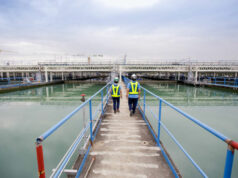Construction starts decline in Q4 2019
By Marissa Mae M. Ramos, Researcher
CONSTRUCTION STARTS, based on approved building permits, declined by 7.7% year on year in the fourth quarter of 2019 amid fewer residential projects during the period, data by the Philippine Statistics Authority (PSA) showed.
Building permits numbered 37,256 in the fourth quarter, less than the 40,369 permits in 2018’s comparable three months.
The projects were equivalent to 9.042 million square meters of space and were valued at P111.58 billion, down 8.8% from a year ago.
Residential constructions, which made up 69.4% of the total approved building permits last quarter, shrank 13.3% to 25,869. The decline was brought about by residential condominiums (-42.2% to 37); single houses (-14.5% to 21,591); apartments/accessorias (-13.6% to 3,387); and other residential properties (-10.2% to 44).
The sole exception was that of duplexes/quadruplexes, which saw a 44.6% increase in permits during the quarter to 810.
Bucking the trend were permits for non-residential constructions, which recorded an increase of 14.5% to 6,289 from 5,491 previously.
Approved commercial structures jumped 23.2% to 3,982, followed by agricultural buildings (7.3% to 234) and institutional buildings (3.9% to 1,316).
Permits for “other non-residential” buildings also grew 35.5% to 149 permits, while those of industrial buildings declined by 8.4% to 608.
Additions to existing structures rose 9.1% to 1,337. On the other hand, the combined number of alterations and repairs of existing structures decreased by 1.2% to 3,761.
Permits at Region IV-A (Calabarzon) — immediately south of the National Capital Region (NCR) — topped the number of approved building permits with 9,808 or a 26.3% share. Coming in second was Central Visayas with 4,880 permits or 13.1%, followed by Central Luzon (9.9%), Ilocos Region (9%), and NCR (7.7%).
“This is still somehow related to the delayed budget of 2019. Construction was challenged in 2019 and it’s not hard to put the two together as the government tried to upscale spending until the end of 2019,” UnionBank of the Philippines, Inc. Chief Economist Ruben Carlo O. Asuncion told BusinessWorld in an e-mail.
Mr. Asuncion was referring to the passage of the 2019 budget, which was signed only in April last year, leading the government to operate on a reenacted budget for more than a quarter. The delay has said to have shed a full percentage point of growth last year.
Meanwhile, President Rodrigo R. Duterte signed the P4.1-trillion 2020 budget last January — the government’s largest spending plan to date. The President has also signed into law a measure allowing the extension of the 2019 budget’s validity until the end of 2020.
With these, UnionBank’s Mr. Asuncion expected construction permits to rebound in the first few months of the year.
“It was a fiscal stimulus of some sort that can help construction activity to recover,” he said.
“With the COVID-19 (coronavirus disease 2019) outbreak, there may be some initial reservation of the expected recovery of construction in the next quarters. However, as mentioned, the 2019 and 2020 budget can act as ‘unintended’ fiscal stimulus versus the negative impact of the coronavirus spread,” the economist added.



